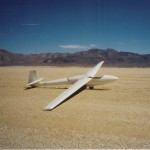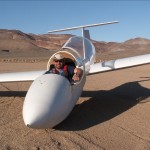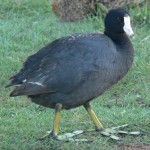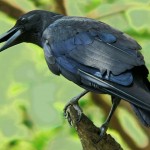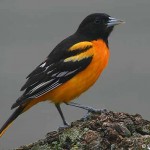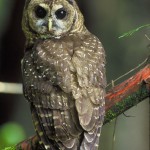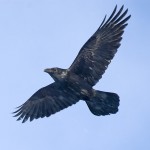
Saturday, 2 August, 2008
Air Sailing Gliderport, Nevada
Subject: Off Field Landing in NSA 2-33 “532â€
Launched on Runway 21 in blustery winds that were W to SW. Very turbulent, strong westerly winds with gusting. Strong sink between strong thermals. Thermals were moving west to east very fast.
Released from tow @6,400 –6,700 (in strong lift) just to the SW of the face of the “Red Rocks. Continued circling to the right after release to stay with the thermal. Climbed to about 7,500 feet or so. Thermal moved me too far east for my comfort zone at that altitude so I headed back west along the crest of the face of the Red Rock. Lots of sink. Worked across the NW side of the northwest facing drop off of the Red Rock plateau, over to the small “nob†in the valley just NNW and back across the crest of the road up to the top of the Red Rock plateau in moderate lift, zero sink and strong sink. About in line with a straight in approach azimuth to runway 21 but just west of the southernmost low hill of the Red Rock cluster at about 5300 feet I contacted a very strong thermal and turned in it. It was moving very quickly east, took me behind that group of hills and though I was back to 7,100 feet, again, I was uncomfortable with that much west wind – a headwind for me to get back to ASI. I decided to call it a day and head back to 21. From 7,100 feet it initially looked like I had enough altitude but I immediately hit needle pegging sink that stayed till the end of this flight. Initially I planned to slip slightly NW through a small notch and have a straight in to 21. Almost as quickly, I realized that with my sink rate and headwind, I would possibly be short and, though a longer path, switched to a SW track, around the low hills because there was a roughly SE-NW dirt road below me around the hills that went to the north end of 17/35. I was too low already by this time to even make the unoccupied fly-in home/runway development SW of the gun range and SE of ASI. Clearly, I was going to land out! Once that decision was clear I concentrated on staying lined up with the road, feathering it in, following the directional changes in the road and keeping my speed up. At the area where I finally touched down, the road ran a little along the side of the last (southernmost) hill. I had to keep the right wing slightly higher to keep it off the hillside, which I did till I finally ran out of flying speed and just stalled/settled straight in, probably 2-5 feet. The road ran up to meet my wheel there on a small rise so there wasn’t much impact, however, even after the stall, I still had some small forward momentum with no aerodynamic control. The right wingtip snagged a sagebrush and swung the fuselage around to the right about 70-80 degrees. I came to a stop facing uphill but with the main wheel and skid centered on the road, the nose sitting on the uphill bank and the tail facing south over a sagebrush and the small flash flood dry creek that ran alongside that portion of the road. That final energy event cracked a weld on the Robinson Swiveling Tail wheel mount and bent the forward mounting bolt for the
spring, a bolt designed to bend or shear in just such circumstances to protect the fuselage. Other than that and the small “nudge on the right wingtip where it caught the sagebrush, there is no apparent damage, no fabric tears, no bent metal (except for that right wingtip “nudgeâ€). While waiting for assistance to arrive I pivoted the ship around and lined it back up with the road thinking someone would come with a tow rope and we would walk it back to 17/35. After pulling it around, I realized the tail wheel mount weld had cracked and normal rope towing would not work.
When Chukar, Coot, Varian and Stoney arrived, we elected to spin 532 back around and take it home tail first with the tail end of the fuselage (bottom) sitting on Varian’s pickup tail gate. With one person steadying the rear of the ship in the pickup, assisted by two tie down clips between hooks in the pickup bed and the elevator strut braces and a wing walker, we pulled the ship the quarter or so mile backwards to the north end of 17/35 and then back down 17 to it’s normal outside tie down.

shadow puppets divx online
That is the technical description. Here’s the important stuff.
Very strong wind away from the field. Strong lift somewhat far spaced, strong
sink all around. When I tried to scratch up “one more time†east of 21, I should have called it and moved south to set up for a pattern, I was at 5,300 feet. As strong as the west-east wind was, I probably could have gone straight in using spoilers and a steep slip to bleed off the altitude. Don’t let this happen to you. I was lucky. Ship should be back in the air momentarily.
That’s it.
Stew Crane



